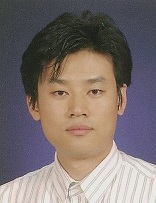Research Terms
The University of Central Florida invention focuses on the simultaneous removal of both long-chain and short-chain per- and polyfluoroalkyl substances (PFAS) in aquatic environments. The frequent detection of PFAS, classified as one of the contaminants of emerging concern (CECs) by the U.S. Environmental Protection Agency (EPA), in sources of drinking water has raised a serious public health concern.
Nearly 200 million people across all 50 U.S. states are reported to be exposed to long-chain PFAS via drinking water with perfluorooctanoic acid (PFOA) and perfluorooctane sulfonic acid (PFOS) concentration at or above 1 ng/L-1. However, short-chain PFAS (such as perfluorobutanoic acid, PFBA, and perfluorobutane sulfonic acid, PFBS), have even higher mobility and persistency than long-chain PFAS. As a solution, the UCF invention uses a hybrid engineering process in which green sorption media (GSM) pretreatment is integrated with a nanofiltration (NF) membrane.
Technical Details: In one example application of the UCF invention, two long-chain (PFOA and PFOS) and two short-chain (PFBA and PFBS) PFAS were selected. Two GSMs served as the pretreatment: Clay-Perlite and Sand sorption media (CPS) and Zero-valent Iron and Perlite based Green Environmental Media (ZIPGEM). The GSM pretreatment led to significant removal of long-chain PFAS (up to 100 percent) in addition to natural organic matter (NOM) and Ca2+ from the source water (canal water); however, the removal rate of the short-chain PFAS (PFBA and PFBS) was up to approximately 25 percent only. It signifies that the membrane plays a complementary role in enhancing the overall removal efficiency of PFAS. In addition to contributing to PFA removal from the source water, GSM pretreatment can help reduce NF membrane fouling/scaling by removing NOM and cations.
Partnering Opportunity: The research team is seeking partners for licensing, research collaboration, or both.
Stage of Development: Prototype available.
The effect of green sorption media pretreatment on nanofiltration during water treatment for long- and short-chain per- and polyfluoroalkyl substances (PFAS) removal, Separation and Purification Technology, Volume 324, 2023, https://doi.org/10.1016/j.seppur.2023.124548.
The University of Central Florida invention is a new specialty adsorbent for improving the targeted adsorption of perfluorooctanoic acid (PFOA), perfluorooctanesulfonic acid (PFOS), perfluorobutanoic acid (PFBA), perfluorobutanesulfonic acid (PFBS), and hexafluoropropylene oxide (HFPO) dimer acid (that is, collectively referred to as "GenX chemicals") in a surface water matrix. The substances are part of the per- and polyfluoroalkyl substances (PFAS) class of emerging contaminants of concern. They have drawn considerable attention due to their impacts on human health and the ecosystem. PFAS are mobile in soil and groundwater and have been shown to bioaccumulate in blood and organs over time, thus posing risks to human health.
The new UCF specialty adsorbent, biochar-based iron and perlite-integrated green environmental media (BIPGEM) was formulated by mixing recycled and natural materials, thus presenting an economically viable, scalable, adaptable, and sustainable solution for surface water and groundwater treatment for removing PFAS.
PFAS have been used since the 1950s to manufacture water-resistant, stain-resistant, and nonstick commercial products such as coatings on food packaging, carpets, outdoor clothing and fabric textiles, leather goods, cosmetics and personal care products, ski and snowboard waxes, and firefighting foams. PFOA and PFOS are the two most common and widely studied compounds in the PFAS family. However, the EPA has announced the National Primary Drinking Water Regulation (NPDWR) for six PFAS, including PFOA, PFOS, perfluorononanoic acid (PFNA), GenX chemicals, perfluorohexane sulfonic acid (PFHxS), and PFBS. While PFOA and PFOS are known as long-chain PFAS, PFBA and PFBS are referred to as short-chain PFAS.
Technical Details: Water collected from a drainage canal in the St. Lucie River Basin (Florida) was spiked with a mixture of the five PFAS mentioned above to test in fixed-bed columns. Each of the PFAS was spiked at a concentration of 70 ng · L-1. Owing to the synergy among biochar, perlite, and clay, BIPGEM demonstrated removal rates exceeding 98 percent for long-chain PFAS (PFOA and PFOS). However, for short-chain PFAS, removal rates ranging from 20 to 40 percent were observed during the initial 44 hours of column run. The modified dose-response model was identified as the most appropriate model to describe the adsorption behavior of the BIPGEM for the removal of PFOA, PFBA, and PFBS. The maximum adsorption capacities were determined to be 370.2 ng·g-1, 35.48 ng·g-1, and 245.32 ng·g-1 for PFOA, PFBS, and GenX, respectively.
Partnering Opportunity: The research team is seeking partners for licensing, research collaboration, or both.
Stage of Development: Prototype available.
“Developing Biochar-based Iron and Perlite Integrated Green Environmental Media for Targeted Adsorption of Long-chain PFAS in the Aquatic Environment,” Journal of Cleaner Production, in review, Dec. 2023.






